激发光源用于观察GFP在亚麻愈伤的表达
河北工程大学在线发表《Construction and optimization of a genetic transformation system for efficient expression of human insulin-GFP fusion gene in flax》,文献中使用了LUYOR-3415RG便携式双波长荧光蛋白激发光源用于绿色荧光蛋白GFP在亚麻愈伤中的表达。
文献摘要如下:
The human insulin gene modified with a C-peptide was synthesized according to the plant-preferred codon, and a fusion gene expression vector of insulin combined with green fluorescent protein (GFP) was constructed. The optimization of the flax callus culturing was undertaken, and a more efficient Agrobacterium-mediated genetic transformation of the flax hypocotyls was achieved. The critical concentration values of hygromycin on the flax hypocotyl development, as well as on its differentiated callus, were explored by the method of antibiotic gradient addition, and the application of antibiotic screening for the verification of positive calluses was assessed. The fusion gene of insulin and GFP was successfully inserted into the flax genome and expressed, as confirmed through polymerase chain reaction and Western blotting. In conclusion, we have established a flax callus culture system suitable for insulin expression. By optimizing the conditions of the flax callus induction, transformation, screening, and verification of a transgenic callus, we have provided an effective way to obtain insulin. Moreover, the herein-employed flax callus culture system could provide a feasible, cheap, and environmentally friendly platform for producing bioactive proteins.
Fluorescence observation of resistant calluses
The transformed explants were observed by a LUYOR-3415RG (Luyang Instrument Co., Ltd, China) excitation light source; the fluorescence was monitored, and the expression of the target protein was assessed.
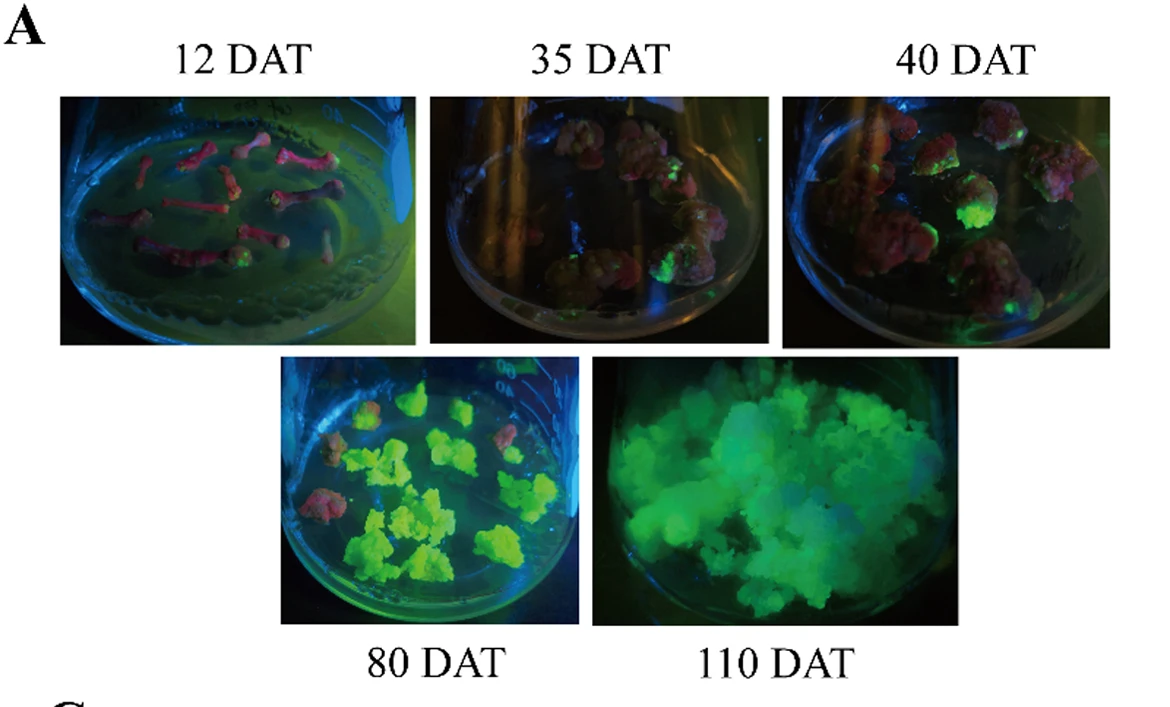
Flax cells could play high-efficiency chassis roles to express functional foreign protein
When the hypocotyl was 6–8 cm long, we cut it into 0.5 to 1 cm-long pieces. After being infected with Agrobacterium, the hypocotyl was cultured on the callus induction medium. After approximately 2 weeks, some hypocotyls were found to grow calluses. LUYOR-3415RG was used to stimulate the light source to observe the protein expression. After picking out the infected hypocotyls, we continued to observe the growth. It was found that some hypocotyls would turn brown and wither during the induction process, while some other hypocotyls were only partially able to form calluses .
文献地址:https://link.springer.com/article/10.1186/s40643-024-00799-9
路阳仪器公司的LUYOR-3415RG便携式双波长荧光蛋白激发光源有数千台服务在动植物研究的实验室,基因编辑的科研人员使用LUYOR-3415简化了实验过程,操作简单,深受科研工作人员的喜爱,如果您对LUYOR-3415便携式荧光蛋白激发光源还不是很了解,我们提供样机免费试用,请按照网页联系信息联系我们!
LUYOR-3415激发光源产品介介绍:
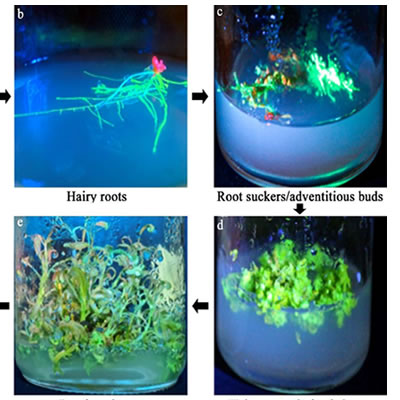 路阳激发光源用于杨树基因的研究
路阳激发光源用于杨树基因的研究
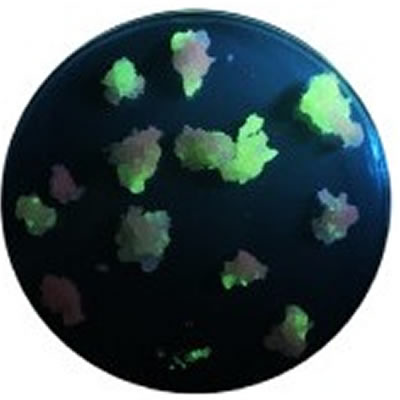 激发光源用于花青素的生物合成的研究
激发光源用于花青素的生物合成的研究
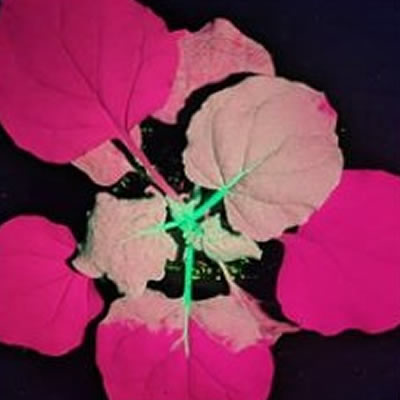 高强度紫外线灯用于观察GFP在植物叶片上的表达
高强度紫外线灯用于观察GFP在植物叶片上的表达
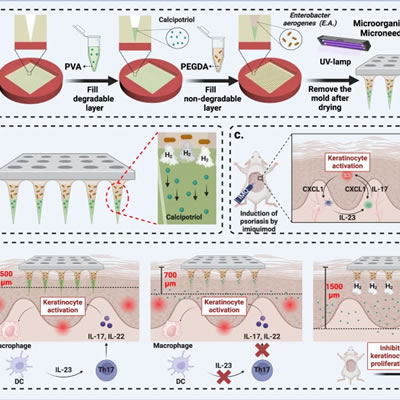 台式紫外灯用于微针制备的固化
台式紫外灯用于微针制备的固化

